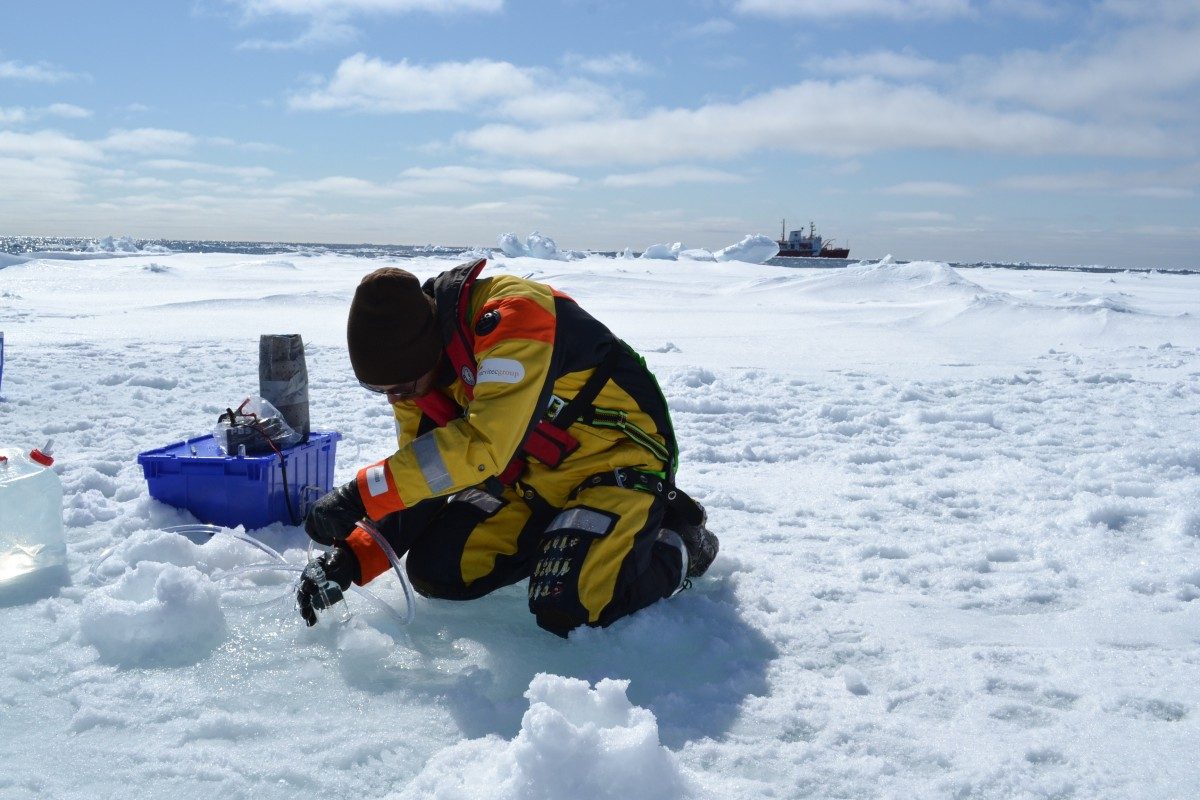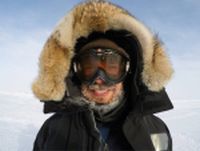
David Capelle sampling water. // Photo: L. Dalman
From the field: Hudson Bay research with BaySys Team 4
Post-doc fellow David Capelle is having a fruitful time in the field working with his advisor Tim Papakyriakou. He files this report on his research investigating carbon cycles in Hudson Bay.
In search of carbon
Our research aims to improve our understanding on the Hudson Bay carbon cycle during spring, and the fate of terrestrial carbon that reaches Hudson Bay. Much like the Arctic Ocean, Hudson Bay is surrounded by rivers which deliver freshwater loaded with terrestrial organic matter from plants and animal waste. The fate of this carbon upon entering Hudson Bay has implications for both greenhouse gas cycling and ocean acidification.
If the terrestrial carbon is buried, it helps mitigate ocean acidification and allows the bay to take up CO2 from the atmosphere. However, if the terrestrial carbon is ‘remineralized’, it releases CO2 to the water, contributing to ocean acidification and potentially even emitting CO2 to the atmosphere.
Some research has already been done on the Hudson Bay carbon cycle. We know that the amount and type of carbon delivered by rivers varies on spatial and seasonal scales. Sediment cores show that only a small fraction of the total amount of the terrestrial carbon delivered to the bay is buried each year. Dissolved terrestrial organic carbon is abundant in Hudson Bay, but is rapidly remineralized by microbes and light. Air-sea CO2 flux data suggest that nearshore regions tend to emit CO2 to the atmosphere, rather than absorb it, and ocean acidification has progressed to the point that many regions are corrosive to calcium-carbonate shells produced by marine organisms. However, our understanding of the Hudson Bay carbon cycle is still incomplete.
One of the major shortcomings is the lack of measurements during winter and spring. I recently addressed the lack of winter measurements during a winter field campaign on the southwestern shore of Hudson Bay in 2017. However, spring is an extremely important time of year when several key processes occur. This is the peak delivery-time for terrestrial organic carbon to the bay. Retreating ice cover may coincide with rapid CO2 emissions, as ice cover prevents CO2 that builds up during winter from escaping to the atmosphere. Warming water and increased sunlight should increase the remineralization rates of terrestrial organic carbon, and thus CO2 accumulation in the water.
I plan to survey the carbon system across a range of Hudson Bay environments during the spring 2018 research cruise, from rivers and estuaries to offshore regions, from open water to ice-covered, and from surface waters to the sediments. I will measure everything from dissolved and particulate forms of carbon in water and ice. On top of these discrete measurements, incubation experiments will be used to estimate the rates of organic carbon remineralization by microbes in each of these regions.
Research at the University of Manitoba is partially supported by funding from the Government of Canada Research Support Fund.







